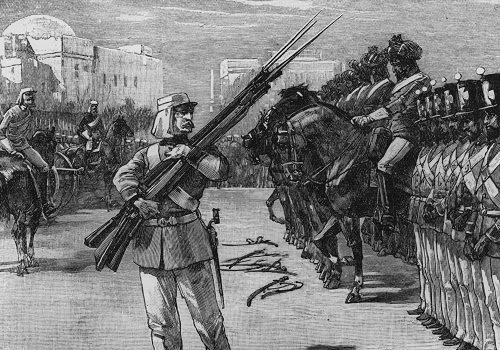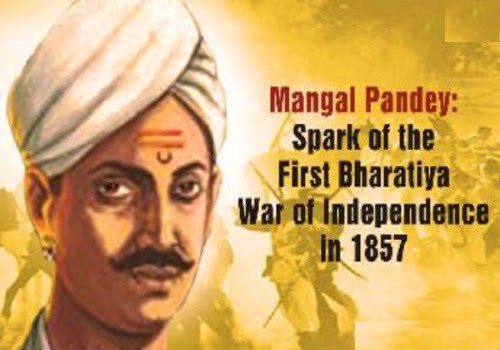When the British imposed their rule over India, there was resistance from royalties across the country, but none could shake the British. It was in 1857, that the first blow came from the Indians. On 29 March 1857, Mangal Pandey, a sepoy of the 34th Bengal Native Infantry mutinied against his commanding officers of the East India Company. This event and Mangal Pandey’s subsequent punishment led to more resentment among the sepoys of the Bengal Army ultimately aiding in the Revolt of 1857. It ushered the spark of nationalism among the fellow Indians.

The man behind this was a mere soldier in the Imperial Army, Mangal Pandey – The man who started the Sepoy Mutiny in India. Mangal Pandey was born in Nagwa village in the Balliya district of Uttar Pradesh on 19th July 1827. He joined the British in 1849, at the age of 18 and became a soldier with the 6th Company of the Bengal Infantry. At the Bengal Infantry at Barrackpore, the British introduced a new type of cartridge which was, apparently made of cow and pig fat. Both Hindus and Muslims couldn’t use the cartridge, for religious reasons, as they had to tear it off with their teeth. A sense of indignation started brewing up among the people. A staunch Hindu Brahmin by faith, Pandey too became furious after knowing about the matter and resolved to show his disapproval to the British.

It was he who led a group of Indian soldiers to refuse the use of cartridge. After revolting he even vouched to kill the 1st English person he saw. He kept his promise and fired at Lieutenant Baugh. Although he missed his shot, he was able to overpower the Lieutenant with a sword. It is said that Lieutenant and Major Hudson had to run back to save themselves. It was Mangal Pandey’s efforts that spread the Sepoy Mutiny from Barrackpore to Meerut, Delhi, Cawnpore and Lucknow. It was due to his genuine efforts that later the British contemplated their action and ordered the soldiers to use their own greasing over the cartridges.
Mangal Pandey was imprisoned and sentenced to a death penalty for his rebellious act. He was tried at the Military court where he was asked the names of those who participated in the act. He did not disclose the names which cost him his own life. Although he was scheduled to be hanged on April 18th, 1857, his death was rescheduled without any prior notification and carried out 10 days beforehand. Thus, Mangal Pandey became one of the 1st martyrs of India. Since the day he died, he is referred to as Shahid Mangal Pandey.
Mangal Pandey’s revolt against the British is regarded as an outset of what turned up to be a major uprising in India, known as the ‘Sepoy Mutiny’. The revolt was against the rule of the British East India Company that ruled as a sovereign power on behalf of the British Crown. The place where Mangal Pandey had attacked the British officers, and where he was later hanged, has been turned into a park now, and is known as “Shahid Mangal Pandey Maha Udyan”. On 5th October, 1984, Govt issued postage stamps which bore the image of Mangal Pandey. He was the mastermind who plotted a revolt against the British and is remembered as a heroic figure and one of the harbingers of the Independence Movement.




























 WhatsApp us
WhatsApp us